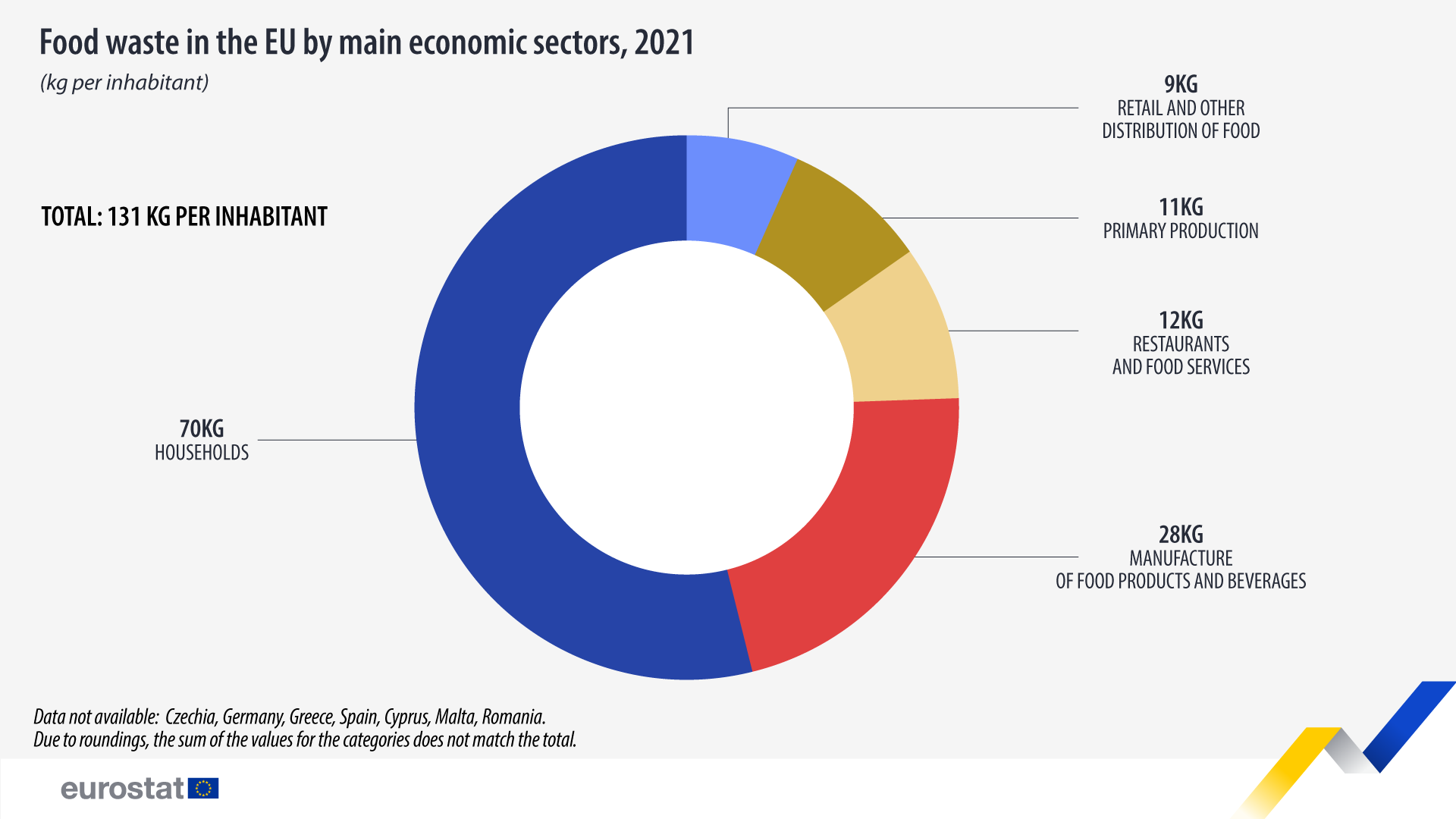Food waste per capita in the EU remained stable in 2021

In 2021, around 131 kilogrammes (kg) of food per inhabitant were wasted in the EU. In total, the EU produced 58.4 million tonnes of food waste, which includes edible and inedible parts.
Among all economic groups, household waste accounted for most: 54% of the total amount of food waste, the equivalent of 70 kg per inhabitant. The remaining 46% was waste generated upwards in the food supply chain: 21% by the manufacture of food products and beverages group (28 kg), 9% by restaurants and food services (12 kg), 9% in the primary production (11 kg) and 7% in the retail group (9 kg).
Source dataset: env_wasfw
This information is part of the first dedicated statistical monitoring of the amount of food waste in the EU by sector of activity according to the NACE rev. 2 classification and by households.
Tackling consumer food waste remains a challenge both in the EU and globally.
Today also marks the International Day of Awareness of Food Loss and Waste.
For more information
- Statistics Explained article on Food waste and food waste prevention - estimates
- Thematic section on waste
- Database on waste
- European Commission food waste reduction proposal
- Reducing Food Waste in the EU: Q&A
Methodological notes
- 2021 data not available for Czechia, Germany, Greece, Spain, Cyprus, Malta and Romania. Eurostat has estimated the EU aggregates on the basis of 2020 data.
- The data are considered stable: several countries have checked or improved the measurement methodology; 8 Member States have revised their 2020 figures
- Food waste consists of parts of food intended to be ingested (edible food) and parts of food not intended to be ingested (inedible food). Food waste is any food that has become waste under these conditions: it has entered the food supply chain, it has then been removed or discarded from the food supply chain or at the final consumption stage, it is finally destined to be processed as waste.
If you have any queries, please visit our contact us page.

